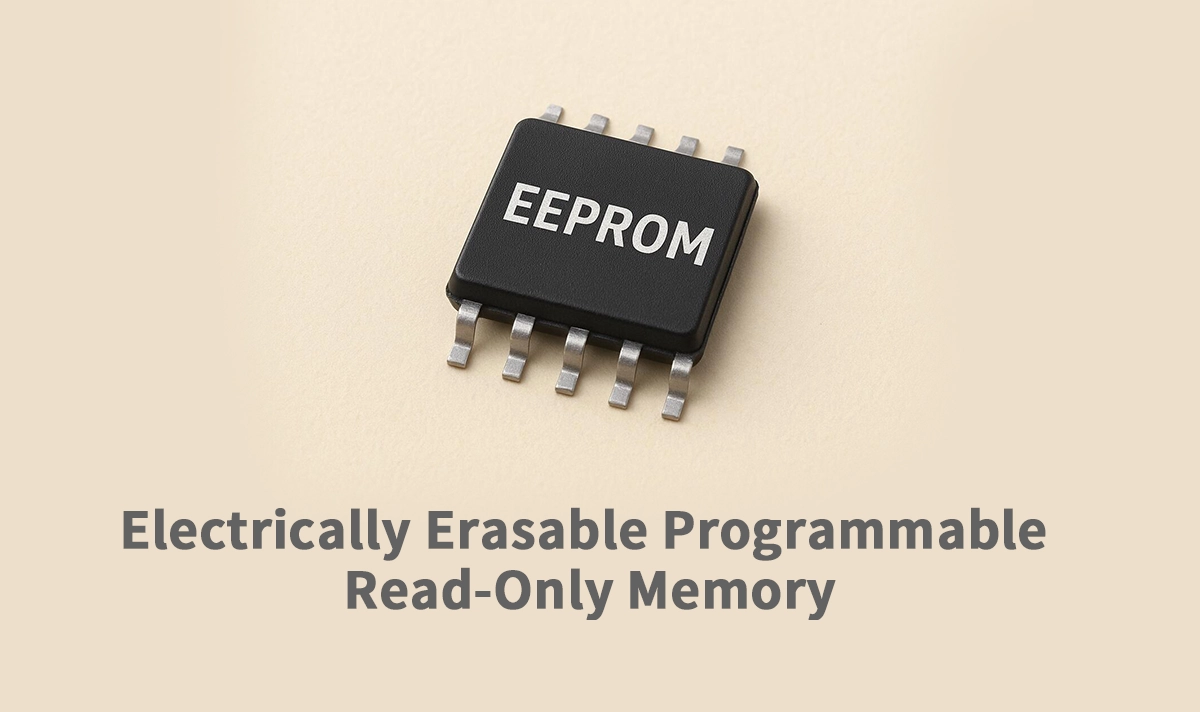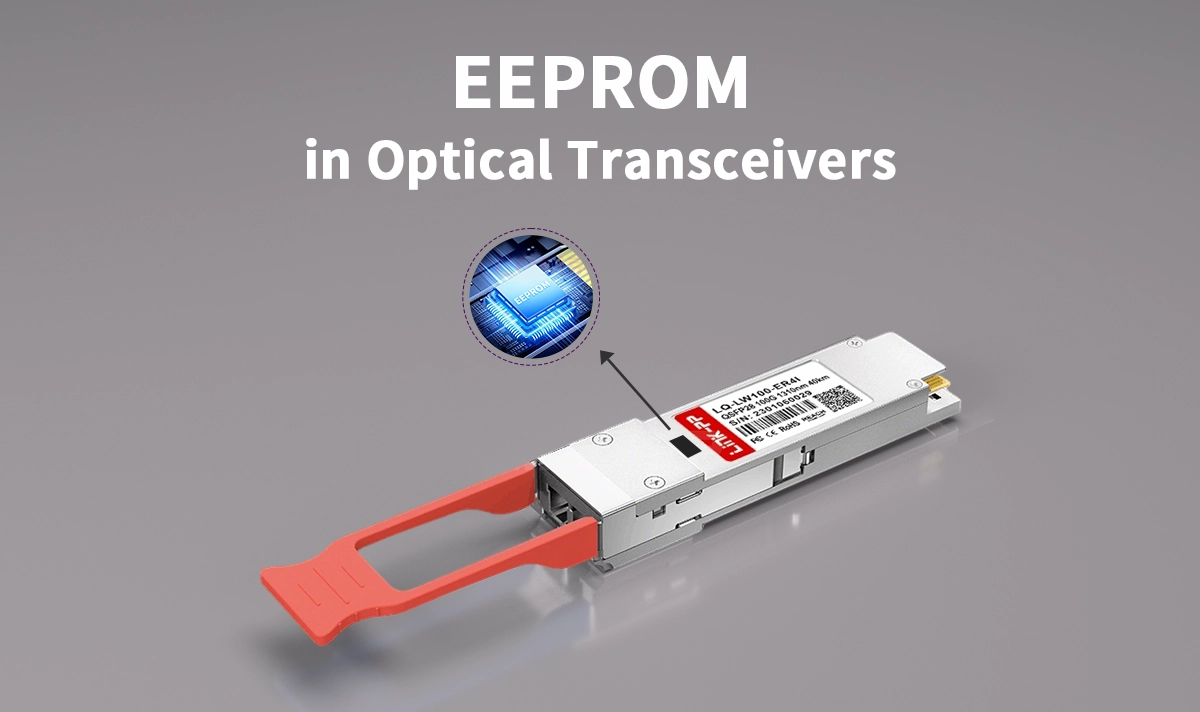
👉 Definition
EEPROM, short for Electrically Erasable Programmable Read-Only Memory, is a type of non-volatile memory that retains data even when power is removed. Unlike traditional read-only memory (ROM), EEPROM can be erased and reprogrammed electrically, in-circuit, without requiring special external tools such as ultraviolet light (used in EPROM).
This makes EEPROM especially valuable in embedded systems, microcontrollers, and consumer electronics, where small amounts of data must be updated and preserved reliably.
👉 Key Characteristics
Non-volatile storage – Data remains intact without power.
Byte-level erase and write – Enables precise modification of data without rewriting entire blocks.
Durability – Typical endurance of 10,000 to 1,000,000 write/erase cycles, depending on the technology.
In-circuit programmability – Can be updated directly while integrated into a device.
Interface options – Commonly available as serial EEPROMs (I²C, SPI) or parallel EEPROMs.
👉 How EEPROM Works
EEPROM relies on floating-gate transistors to store data:
Programming (writing): Applying a higher-than-normal voltage forces electrons into the floating gate, altering the transistor’s state.
Erasing: Reversing the process removes electrons from the gate, resetting the memory cell.
Reading: The system senses the transistor’s threshold voltage to determine whether the stored bit is a 0 or 1.
This mechanism allows reliable data retention for years, making EEPROM a trusted solution for small but critical data storage.
👉 Common Applications of EEPROM
EEPROM is widely used across industries due to its reliability in storing small but essential data. Common applications include:
Microcontrollers: Storing calibration constants, device configurations, and runtime logs.
Computers & servers: Storing SPD (Serial Presence Detect) data in RAM modules.
Consumer electronics: Remote keyless entry systems, smart cards, and IoT devices.
Industrial systems: Secure storage of encryption keys, device IDs, and sensor calibration data.
EEPROM in Optical Transceivers

In networking hardware, SFP and QSFP optical Modules integrate EEPROM to store key information such as:
Vendor ID and part number
Wavelength and supported data rate
Serial number and production details
Compatibility and compliance codes
Standards like SFF-8024 (transceiver ID codes) and SFF-8472 (digital diagnostics monitoring) define the structure and content of this EEPROM, ensuring interoperability across vendors. When a transceiver is connected to a switch or router, the host reads the EEPROM to verify compatibility and access module specifications and diagnostics.
👉 EEPROM vs. Flash Memory
While Flash is technically a form of EEPROM, there are notable differences:
Feature | 🗂️ EEPROM | ⚡ Flash Memory |
|---|---|---|
Erase granularity | Byte-level | Block-level (e.g., 512 bytes or larger) |
Write flexibility | High – precise updates possible | Limited – must rewrite large sections |
Speed | Slower | Faster, optimized for large storage |
Density | Lower | Higher, suitable for mass storage |
Typical use | Small parameter storage (configurations, calibration, keys) | Firmware, large data storage |
👉 Conclusion
EEPROM remains a crucial memory technology in modern electronics. While Flash dominates high-density storage, EEPROM’s precision, reliability, and flexibility make it indispensable for storing small but critical data. In networking, EEPROM enables optical transceivers to communicate identity, performance, and compatibility, ensuring seamless operation across devices and vendors.
👉 FAQ
Q1: Is EEPROM volatile or non-volatile?
EEPROM is non-volatile, meaning it retains data without power.
Q2: How long does EEPROM last?
Modern EEPROM typically endures up to 1,000,000 write/erase cycles, with data retention for 10–20 years.
Q3: Why use EEPROM in optical transceivers?
EEPROM stores essential module data—such as vendor ID, wavelength, and diagnostic parameters—allowing switches and routers to identify, configure, and monitor the transceiver.
Q4: What is the difference between EEPROM and Flash?
EEPROM supports byte-level updates, ideal for frequent small changes, while Flash is optimized for high-capacity, block-level storage.


